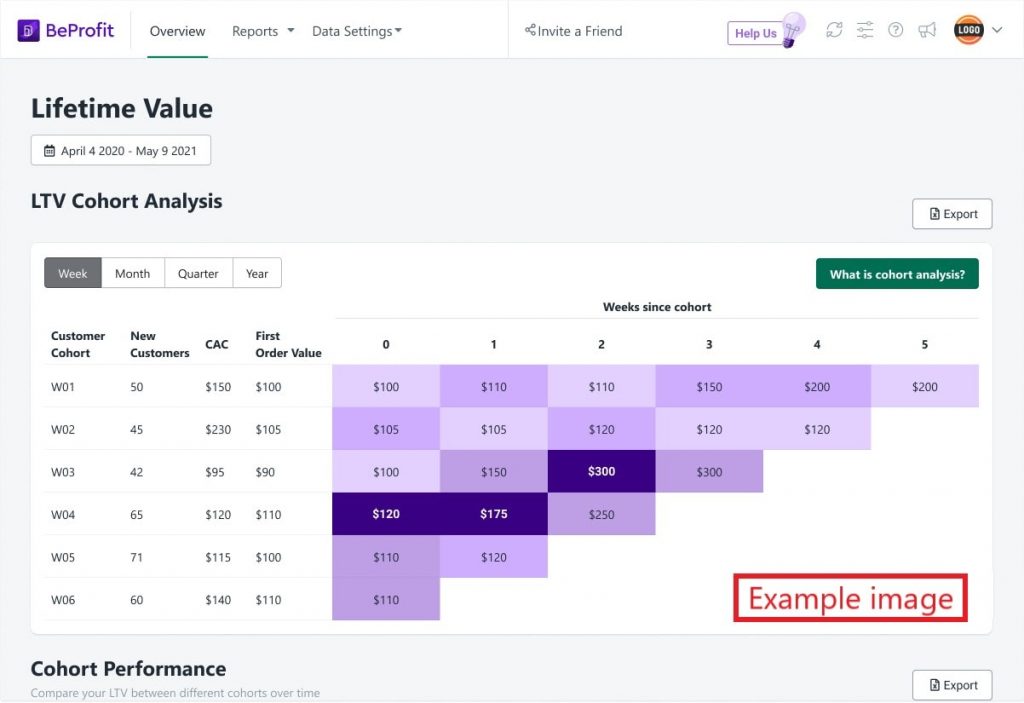
5 Tried and Tested Ways To Calculate Customer Lifetime Value
What’s the real value of creating a happy customer? That really is the million-dollar question in the world of e-commerce.
Online business owners stay on the grind day-in and day-out to attract customers and keep their stores generating revenue. It’s not always easy or cheap, especially for those who aren’t actively monitoring the data behind their businesses. Oftentimes, it can be even harder to track how your business is doing than to generate revenue in the first place.
There are plenty of metrics that e-commerce business owners can (and should) focus on in order to improve store performance – and one of the most important data points to track and calculate is customer lifetime value.
Scroll down and get the full guide on the importance of customer lifetime value.
What is customer lifetime value?
Customer lifetime value (CLV for short) is a metric that aims to define how much money the average customer can be expected to spend at your business from the time of their first purchase until their last purchase.
There are a number of different customer lifetime value formulas that you can use, and we’ll discuss them in more detail below. To start with, here’s a basic customer lifetime value equation:

This is one of the most simplistic equations you can use to calculate customer lifetime value, but makes sense without having to think too hard about it. If you measure how much revenue your business totaled within a specific timeframe (total accumulated revenue), and then divide by the total number of customers within that timeframe (total number of customers), you get the average customer lifetime value.
A simple and quick formula for average customer lifetime value in ecommerce is good, but precise calculations are better. We’ll dive into the nitty-gritty about how to more accurately calculate customer lifetime value in just a bit, but first…
What is the importance of customer lifetime value in e-commerce?
It’s hard to over-exaggerate the importance of calculating customer lifetime value for your e-commerce business. Knowing your business’s CLV gives you a broader perspective on your business’s profitability and can even help you overcome e-commerce challenges such as:
- Determining how much to invest in customer acquisition (and e-commerce advertising)
- Determining how much to invest in creating repeat customers
- Identifying which categories of customers are more valuable than others
- Identifying when and why purchases drop off
- Finding the best types of pricing strategies to implement
- Finding ways to improve your conversion rates
To reiterate, there are numerous metrics that you can use to measure profitability for your business – and some are more effective at pinpointing the real customer lifetime value. That said, having a reliable customer lifetime value model to use can make it easier for you to improve your business in a variety of ways.
[bctt tweet=”However you do it, running an accurate and reliable customer lifetime value equation will give you insights into your #business’s profitability that could otherwise be hidden.” username=”Become_co”]
How to calculate customer lifetime value
1. Average order value

Calculating average order value (AOV) is the first step on the quest to reach the most accurate customer lifetime value model. With a clear idea of how much revenue the average order generates for your business, you can start developing rough predictions of what the typical customer can be expected to spend.
2. Customer value
Once you have your AOV calculated, the next step towards understanding true customer lifetime value is to multiply your AOV by purchase frequency to measure average customer value (not to be confused with customer lifetime value).
First, you’ll need to calculate purchase frequency. In case you need that equation, here it is:

You can then run the equation for average customer value:

Average customer value is, well, a valuable metric to have at hand since it paints a picture of how much the average customer will spend and how often – but this equation doesn’t address a significant issue: how long will the average customer remain a customer?
That leads us to the next customer lifetime value equation…
3. Customer lifetime value (rough)

With average order value and purchase frequency figured out, all you need to do is incorporate the median customer lifespan into the equation to determine customer lifetime value.
You can go about this two ways:
1. Use the industry standard customer lifespan. Estimates vary, but some experts suggest the standard customer lifespan for the e-commerce industry falls at around 3 years. Of course, since this is an estimate, it won’t be entirely accurate.
2. Measure your actual customers’ median lifespan. Create a list of all your customers’ lifespans, organize the list from shortest to longest lifespans, and then find the value that falls directly in the middle of that list. With your median customer lifespan you can come much closer to the real customer lifetime value, since it’s a real measurement and not just an estimation.
4. Customer lifetime value (advanced)

The advanced version of the customer lifetime value equation essentially replaces customer lifespan (industry standard or your shop’s median customer lifespan) with your shop’s customer churn rate.
Your customer churn rate is a metric that defines the number of individuals that cease being customers within a specified period of time – typically shown as a percentage value. Here’s the churn rate equation:

Note that you can adjust the period of time for which you calculate the churn rate, but that you must remain consistent throughout the equation. In other words, if you use the number of customers at the end of the year, you must also use the number of customers at the start of the year.
5. Easy CLV calculation with BeProfit

The best, easiest, and most accurate calculation for customer lifetime value is to simply use the BeProfit – Profit Tracker app for your Shopify store. The app automatically gathers and analyzes your store’s complex data and turns it into easy-to-understand charts and graphs, taking all of the stress out of finding out what your customer lifetime value is.
BeProfit uses more precise algorithms to determine your business’s true customer lifetime value through what is called cohort analysis. The basic premise behind cohort analysis is that your store’s customer data is separated into groups according to when customers made their first purchases before seeking to measure their lifetime value. Learn more about BeProfit’s advanced LTV cohort analysis feature here.
By grouping customers into cohorts, the app takes into account the natural development of the customer journey and the different behaviors that customers exhibit as time goes on.
For example, new customers may start off making fewer and smaller purchases. But by the third month, the average order value could increase and the purchase frequency may follow suit. With that knowledge, you can tailor your approach to fit the stage which each different cohort of customers is in at any given time.
Aside from determining ways to optimize customer experience, using BeProfit to measure customer lifetime value will help you develop a clearer understanding of your store’s profitability. You’ll also get a better idea of how you can expect profitability to change as time goes on.
The perfect customer lifetime value example
Let’s put these customer lifetime value equations to the test with a real-world example. Imagine that McDonald’s is conducting an annual performance review and wants to calculate customer lifetime value. They have the following information at their disposal:
Average Order Value (AOV) = $6.50
Purchase Frequency (PF) = 96 times per year
Customer Lifespan (L) = 10 years
Yearly Churn Rate (C) = 0.11
*Please note that these are estimates, not real values.
Here are the two customer lifetime value calculations you can run on your own in order to measure McDonald’s CLV:
1.

2.

As you can see, these two customer lifetime value models produce different results – so which one should McDonald’s base their business strategy on? We pose this question to demonstrate the importance of recognizing how one equation is more accurate than the other.
It should go without saying that a difference of roughly $600 could make a big impact on profitability! Overestimating CLV by $600 might lead you to invest money you don’t have into your marketing efforts. In contrast, underestimating CLV by $600 might make you run your business more cautiously than is necessary, which can limit your opportunities to grow stronger.
For a worldwide corporation like McDonald’s, hiring teams of professional accountants to precisely measure CLV is a no-brainer. Unfortunately, that’s not typically an option for small online businesses with limited resources. Maybe you’re calculating lifetime value with Google Analytics. Instead, for a simple way to calculate CLV for your online business, use BeProfit – Profit Tracker and get easy, fast, and accurate CLV calculations.
CLV to see new heights
Your online business is a work in progress and always will be. That’s why calculating customer lifetime value is so important to do on a regular basis. While you can run all of those calculations by hand, fortunately, our age of technology has brought automated ways to get the job done.
However you do it, running an accurate and reliable customer lifetime value equation will give you insights into your business’s profitability that could otherwise be hidden. Open your business horizons and start using your CLV wisely!





